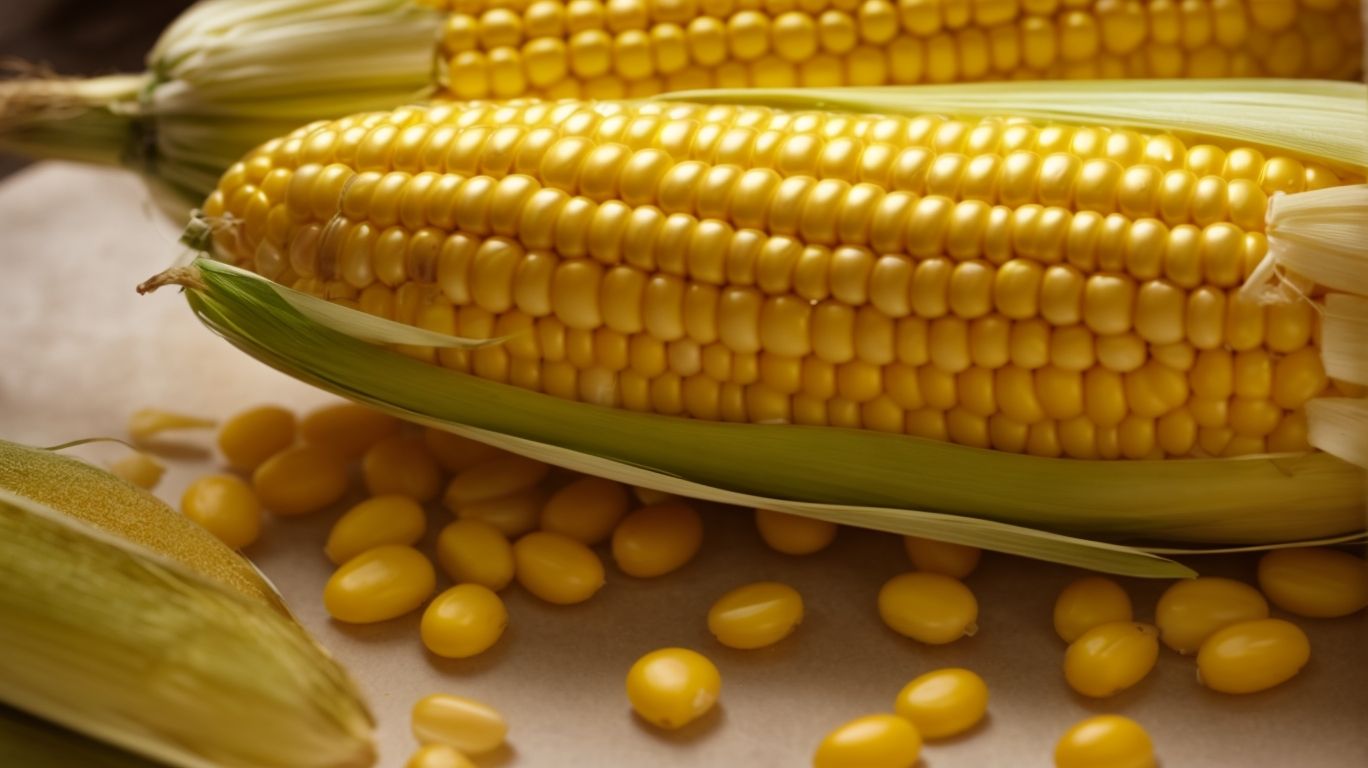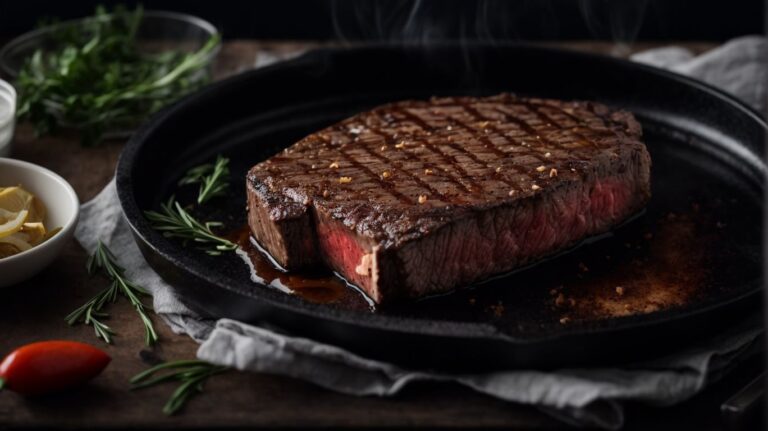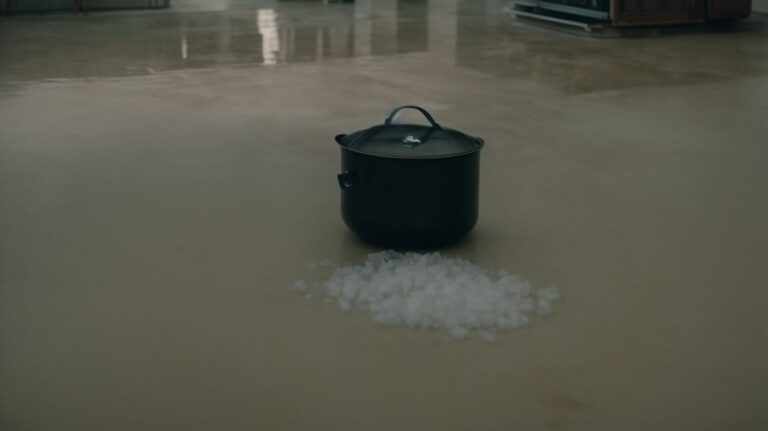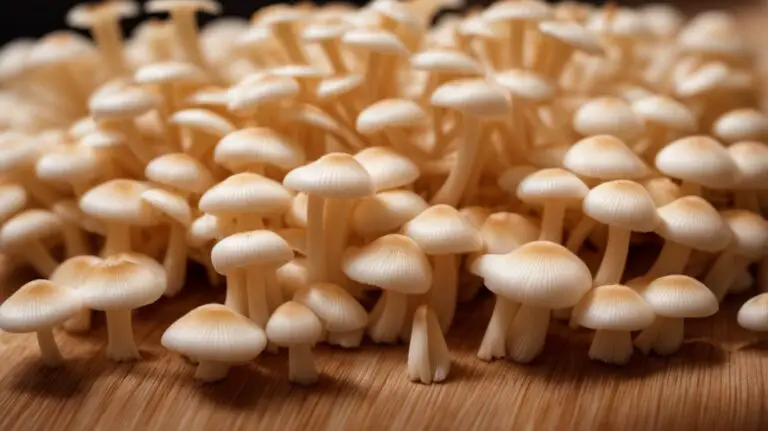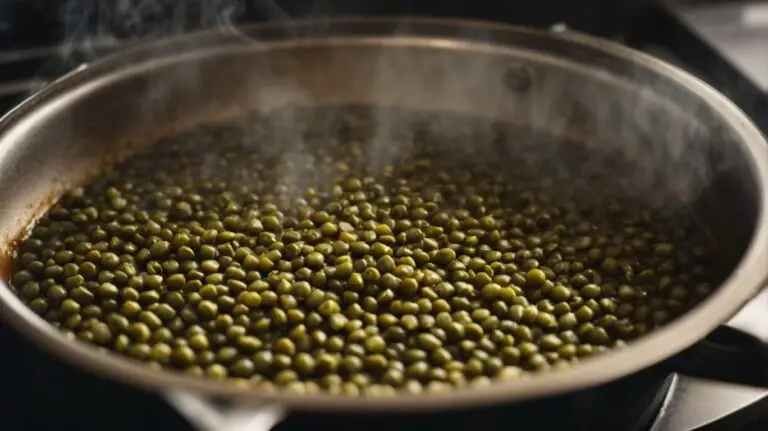How to Cook Corn After Cutting Off Cob?
Are you looking to elevate your cooking game with fresh corn off the cob?
We explore the reasons why cutting corn off the cob is a game-changer in the kitchen. From making it easier to eat to saving time and adding versatility to your recipes, there are numerous benefits to mastering this technique.
We’ll also dive into different methods for cutting and cooking corn off the cob, along with delicious recipes and essential tips for a successful culinary experience.
Join me on a culinary journey as we explore the world of corn off the cob!
Key Takeaways:
Why Cut Corn off the Cob?
Cutting corn off the cob offers numerous benefits, making it easier to enjoy the sweet and flavorful kernels in a variety of dishes.
One of the main advantages of utilizing fresh corn off the cob is its versatility in recipes. Whether you’re making a vibrant summer salad, creamy corn chowder, or savory corn fritters, the options are endless. By removing the kernels from the cob, you can easily incorporate them into both sweet and savory dishes, adding a burst of freshness and flavor. Convenience is another key factor – it saves time in preparation, especially for quick meals after a long day.
Easier to Eat
Cutting corn off the cob makes it easier to enjoy the sweetness and freshness of each kernel without the constraints of the cob.
By removing the kernels, you free them from the fibrous husk, allowing the natural sweetness to shine through in every bite. These freshly cut corn pieces are not only delectable on their own but also lend their sweet touch to a myriad of dishes. Whether added to salads for a burst of flavor and crunch, stirred into creamy risottos or comforting soups, or sprinkled over pizzas and tacos for a pop of color and taste, cut corn enhances both the eating experience and the visual appeal of the dish.
Versatile for Recipes
Cut corn off the cob enhances recipe versatility, allowing for the incorporation of delicious kernels into a wide range of dishes.
These vibrant yellow nuggets of sweetness can be utilized in both savory and sweet dishes.
Corn
can be added to soups, salads, casseroles, stir-fries, and even baked goods to provide a burst of flavor and texture. When cooking with cut corn, consider using different seasonings like paprika, cumin, garlic powder, or fresh herbs to elevate the taste profile.
Culinary creativity
shines through when experimenting with different heat applications such as grilling, roasting, sautéing, or even incorporating them in chilled dishes like salsas or salads.
Saves Time
Cutting corn off the cob saves valuable time in the kitchen, streamlining the cooking process and offering a quicker method for preparing delicious corn dishes.
When opting for pre-cut corn, whether fresh or frozen, you eliminate the need for careful cob-handling, speeding up your meal prep. Cut corn can be effortlessly added to stir-fries, casseroles, salads, or soups, enhancing both flavor and texture. Utilizing the right cooking tools like a sharp knife or a trusty non-stick pan further expedites the process.
Blanching the corn kernels for a few minutes before using them in recipes helps lock in their freshness while also reducing the overall cooking time. This efficient technique, coupled with pre-cut corn, ensures your dishes are not only savory but also prepared swiftly with minimal effort.
How to Cut Corn off the Cob?
Cutting corn off the cob can be achieved using various methods, ensuring the kernels are separated efficiently for culinary use.
One effective technique for cutting corn off the cob is using a sharp knife to slice vertically down the cob, allowing the kernels to fall into a bowl or onto a cutting board.
- Another method involves using a bundt pan or a tube pan placed inside a larger bowl. As you run the knife along the cob’s length, the kernels fall into the indentation of the pan, preventing them from scattering around.
Using a Knife
Using a sharp knife is a common and effective method for cutting corn off the cob, ensuring precision and flavor retention in each kernel.
When preparing fresh corn, start by shucking the husks and silk to reveal the golden ears beneath. Then, place the ear of corn upright on a cutting board to stabilize it for cutting.
Hold the top of the ear firmly with one hand and carefully slice downwards along the cob with the sharp knife using a gentle sawing motion. A sharp blade ensures clean cuts, preventing the kernels from becoming bruised or crushed.
This cutting method not only maintains the integrity of the kernels but also helps preserve the natural sweetness and crunch of the farm-fresh produce. The flavors and textures remain vibrant and unaltered, making each bite a delightful experience.
Using a Corn Stripper
A corn stripper is a handy tool for efficiently removing kernels from the cob, simplifying the process of preparing delicious corn for cooking.
By effortlessly sliding the corn stripper along the cob, it neatly separates the kernels without the need for a knife, saving time and reducing waste. The sharp stainless steel blades ensure clean cuts, leaving behind the fibrous husk. This convenience not only enhances the efficiency of corn preparation but also elevates the overall cooking experience.
Whether you’re making salads, salsas, or chowders, having a corn stripper can transform the way you handle fresh corn, making it a must-have tool in any kitchen.
Using a Mandoline
Utilizing a mandoline slicer can provide uniform and precise cuts when removing corn from the cob, ensuring consistent thickness for culinary applications.
One of the key benefits of using a mandoline slicer for this task is the ability to achieve even slices effortlessly, which enhances the presentation of dishes and ensures even cooking. By adjusting the blade settings, you can control the thickness of the corn slices, allowing for versatility in recipes that call for different textures. The consistent cuts obtained through a mandoline slicer allow for more uniform absorption of flavors and seasonings, resulting in a more balanced and well-rounded dish.
How to Cook Cut Corn off the Cob?
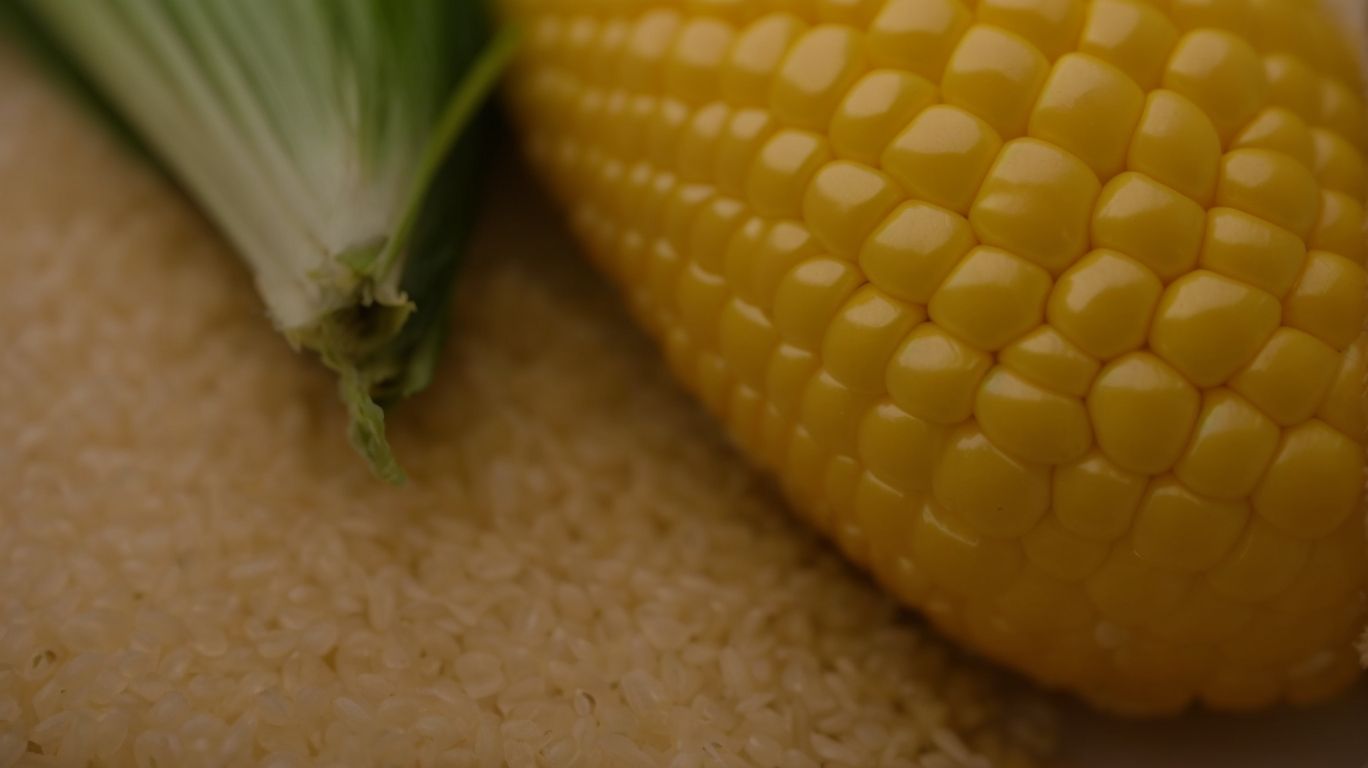
Credits: Poormet.Com – Christopher Hill
Cooking cut corn off the cob opens up a world of culinary possibilities, from boiling and grilling to roasting and microwaving, each method enhancing the natural flavors of the kernels.
Boiling cut corn in water preserves its sweetness while adding tenderness, ideal for salads or side dishes.
Grilling cut corn offers a smoky charred flavor that brings a delicious depth to the kernels, perfect for summer barbecues.
Roasting cut corn in the oven caramelizes the sugars, creating a rich and savory taste profile that works well in various recipes.
Microwaving cut corn is a quick and convenient method, retaining moisture and freshness, great for a speedy snack or addition to soups and stir-fries.
Boiling
Boiling cut corn off the cob is a simple yet effective method to cook the kernels quickly while preserving their natural sweetness and flavors.
When you boil cut corn, whether fresh or frozen, ensure that the water is well salted to enhance the natural flavors of the vegetable. A quick tip is to add a sprinkle of sugar to boost the sweetness even more. Boiling helps the corn retain its natural sugars, resulting in a crisp, tender texture.
To add more depth to the flavor, consider incorporating seasonings like garlic powder, paprika, or a splash of lemon juice during the boiling process. These additions can elevate the dish from simple to gourmet without much effort.
Grilling
Grilling cut corn off the cob imparts a delightful smoky flavor and caramelization, elevating the kernels to a new level of taste and texture.
When preparing the corn for grilling, it’s essential to ensure the kernels are evenly coated with a light layer of oil to prevent sticking and promote even char. Place the corn directly on the grill or utilize a grill basket, keeping a close eye to achieve the perfect balance of charred notes without burning. The charred edges add complexity to the sweetness of the corn while infusing it with that distinct smoky aroma that grill enthusiasts crave.
Roasting
Roasting cut corn off the cob brings out the natural sweetness and intensifies the flavors, creating a delectable side dish or ingredient for various recipes.
When roasting fresh cut corn, the high heat caramelizes the sugars in the kernels, imparting a beautiful depth of flavor. This cooking method also adds a delightful smoky char to the corn, enhancing its taste profile. To further elevate the dish, consider incorporating earthy herbs like thyme or rosemary, or a sprinkle of smoked paprika for a hint of spice. A drizzle of melted butter over the roasted corn can bring a rich and indulgent element to the dish, perfect for a flavorful side that complements a variety of main courses.
Microwaving
Microwaving cut corn off the cob is a quick and convenient cooking method that retains the freshness and tenderness of the kernels with minimal effort.
When you microwave cut corn, you are leveraging the capabilities of steam to cook the kernels swiftly and evenly. This method is perfect for those busy days when you crave a delicious side dish but lack the time for elaborate preparations.
By simply placing the cut corn in a microwave-safe dish, covering it with a damp paper towel, and heating it for a few minutes, you can enjoy sweet and vibrant corn without losing any of its natural flavors. The microwave locks in the moisture, preserving the nutrients and textures that make corn a delightful addition to any meal.
Recipes Using Cut Corn off the Cob
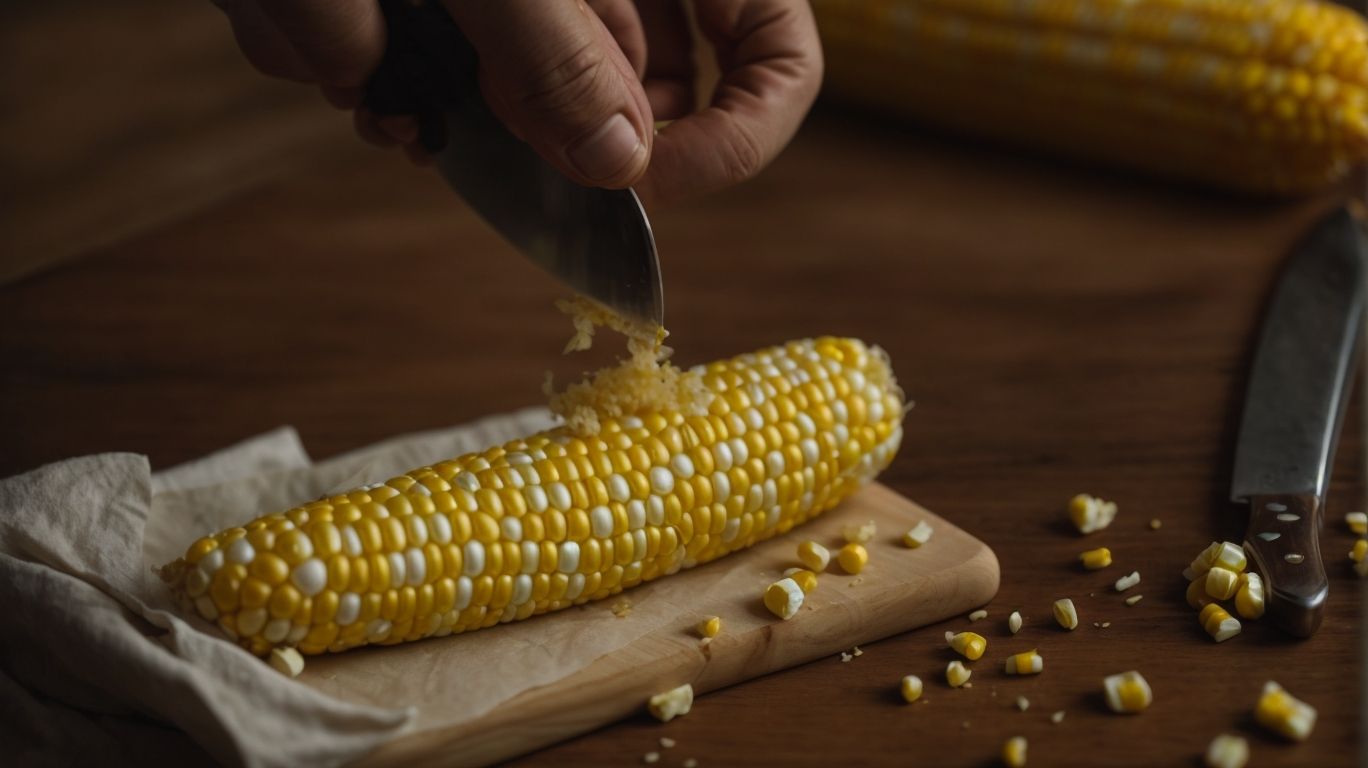
Credits: Poormet.Com – Mark Harris
Incorporating cut corn off the cob into recipes adds a burst of freshness and flavor, elevating dishes such as Corn Chowder, Corn Salsa, and Corn Fritters to new culinary heights.
For a vibrant Corn Chowder, the sweetness of the cut corn brings balance to the rich, creamy base, while a hint of bacon adds a savory depth.
In a zesty Corn Salsa, the kernels provide a crunchy texture that complements the tangy lime juice and cilantro.
When mixed into a crispy batter for Corn Fritters, the cut corn adds pops of sweetness against the savory backdrop of herbs and spices.
Corn Chowder
Corn Chowder, a hearty and comforting soup, showcases the sweetness and texture of cut corn kernels simmered in a flavorful broth with seasonings and aromatic vegetables.
When preparing Corn Chowder, it is crucial to use a high-quality nonstick pan to achieve the perfect consistency and prevent sticking. The nonstick surface allows the corn kernels to cook evenly without the need for excessive oil or butter, preserving the natural flavors of the ingredients. This method enhances the overall taste and texture of the chowder, making it a delightful dish to savor on a chilly evening.
Corn Salsa
Corn Salsa, a vibrant and zesty condiment, combines fresh cut corn with diced tomatoes, onions, peppers, and cilantro, seasoned with lime juice and spices for a burst of flavor.
If you’re looking to add a punch of freshness to your favorite dishes, this Corn Salsa recipe is a must-try. The beauty of Corn Salsa lies in its simplicity and versatility; it can be a topping for tacos, a side dish with grilled meats, or even a standalone snack with some crispy tortilla chips. The key is to use the freshest ingredients available to bring out the natural sweetness of the corn and the tanginess of the tomatoes. With just a few minutes of preparation, you can have a colorful and flavorful condiment that will elevate any meal. So, gather your ingredients and let’s get cooking!
Corn Fritters
Corn Fritters, crispy and golden brown, feature a savory batter mixed with cut corn kernels, fried to perfection, and served with a side of creamy dipping sauce for a delightful snack or side dish.
Making these delectable corn fritters at home is easier than you think. Start by combining fresh corn kernels with a mixture of flour, eggs, milk, and a pinch of salt and pepper to enhance the flavors.
Some recipes even call for a hint of sweetcorn in the batter for a touch of sweetness. Once the batter is ready, gently drop spoonfuls into a hot skillet greased with butter, allowing them to cook until they turn that irresistible golden hue, crispy on the outside and soft on the inside.
Tips for Cooking Corn off the Cob
Mastering the art of cooking corn off the cob requires attention to detail and a few essential tips to ensure optimal flavor and texture in every dish.
Regarding using fresh ingredients in your dishes, corn is no exception. Fresh corn harvested at its peak not only imparts a sweet and vibrant flavor but also enhances the overall quality of your meal. Proper cutting techniques play a crucial role in preparing corn off the cob. Using a sharp knife, carefully remove the kernels in even strokes to prevent any unwanted pieces or damage to the corn.
After mastering the cutting process, knowing how to store the leftover corn kernels is equally important. To maintain freshness, store the kernels in an airtight container in the refrigerator for up to three days, ensuring they stay flavorful and ready for your next culinary creation.
Choose Fresh Corn
Selecting fresh, high-quality corn is essential for cooking flavorful dishes, ensuring that the kernels are sweet, tender, and bursting with natural taste.
When you opt for farm-fresh corn, you are not just enhancing the taste of your culinary creations but also supporting local farmers and seasonal produce. The sweetness and juiciness of the kernels are at their peak when freshly harvested, infusing your recipes with vibrant flavors and nutrients.
Seasonal availability plays a crucial role in the quality of ingredients, and fresh corn is no exception. From creamy corn chowders to grilled corn on the cob, using fresh, in-season corn elevates your dishes to a whole new level of culinary excellence.
Use a Sharp Knife
Employing a sharp knife for cutting corn off the cob is crucial for precision and efficiency, allowing for clean cuts that preserve the integrity of the kernels.
A sharp knife not only makes the task easier but also ensures that you extract the whole kernel without leaving any behind on the cob. The sharp blade effortlessly glides through the corn, providing smooth and even slices, which play a significant role in the overall presentation of the dish.
When using a dull knife, you might find yourself applying more pressure, which can lead to crushing the corn instead of cleanly cutting it. This can affect the texture and appearance of the corn, impacting the final outcome of your recipe.
Don’t Overcook
Avoiding overcooking corn is essential to retain its natural flavors and textures, ensuring that the kernels remain crisp, juicy, and bursting with sweetness.
When corn is overcooked, it can result in a mushy and bland taste, losing its vibrant colors and nutritional value. The key to achieving that perfect balance lies in cooking it just until it reaches the right texture; moist and tender, but still with a slight crunch. This delicate process requires careful attention to boiling or grilling times, ensuring that the corn is neither underdone nor overdone. By following recommended cooking times and methods, you can unlock the full potential of this summer favorite, creating a delightful dish that’s a feast for the senses.
Store Properly
Properly storing cut corn ensures its freshness and quality, whether in the refrigerator, freezer, or blanched for extended shelf life, preserving its flavors for future use.
When storing cut corn in the refrigerator, ensure you place it in an airtight container or a resealable plastic bag to prevent moisture loss and maintain crispness. Consider blanching the corn to lock in its vibrant color and nutrients before freezing.
To freeze cut corn, first spread it out in a single layer on a baking sheet to prevent clumping, then transfer to freezer-safe bags or containers for longer-term storage. Label and date packages to easily identify them in your freezer and keep track of freshness.
Frequently Asked Questions
Can I cook corn after cutting off the cob?
Yes, you can definitely cook corn after cutting off the cob! In fact, there are many delicious recipes that call for pre-cooked corn kernels.
What is the best way to cook corn after cutting off the cob?
The best way to cook corn after cutting off the cob is to blanch it in boiling water for about 3-4 minutes. This will help retain the corn’s sweetness and texture.
Can I cook corn after cutting off the cob without boiling it?
Yes, you can cook corn after cutting off the cob without boiling it. You can grill, roast, sauté, or even microwave the corn kernels for a tasty and easy alternative.
How do I store cut corn kernels before cooking?
If you need to store cut corn kernels before cooking, make sure to wrap them tightly in plastic wrap or store them in an airtight container. They will keep well in the fridge for 2-3 days.
Can I freeze cut corn kernels for later use?
Absolutely! After cutting off the cob, you can freeze the corn kernels in an airtight container or freezer bag for up to 6 months. Thaw them in the fridge before cooking.
What dishes can I make with cooked corn kernels?
There are endless possibilities for dishes with cooked corn kernels! You can add them to salads, soups, tacos, casseroles, and even use them as a topping for pizza. Get creative!

